A WALK THROUGH THE DETAILS OF A HOT SUMMER DAY
It was a long and hot Wednesday.
I spent the whole day, from dawn to dusk, outdoors ...
... in the Nature Park Cape Kamenjak, the southern cape of Istra, the peninsula region in which I live.
Nature Park is a long narrow peninsula, and its coastal scenery is very interesting, but I was focused on the small details around me ...
... so you'll see mainly insects and spiders in today's post.

This Bombus Terrestris bumblebee was photographed very early in the morning, soon after I left my car in the empty parking area at the entrance of the park.
The small spider shown in this photograph belongs to the Theridiidae family.
The name of the species is Enoplognatha ovata.
A caterpillar ended up caught in the web so the spider is proceeding to immobilize the prey.

This small butterfly from the Lycaenidae family was also photographed in the beautiful morning light. The name of the species is Plebejus argus.
This is the Pyrausta aurata ...
... a small moth from the Crambidae family. The moth was resting on the leaves of Dittrichia viscosa.

This spider, the Neoscona adianta from the Araneidae family was photographed on the same plant.

In some places, the grass was covered with dew.

When it comes to the small moth shown in this photograph, I can tell you the name of the species. The family is probably Crambidae.

Here you can see the droplets on the Trifolium squamosum flowers.

This is the nymph of the Phaneroptera nana bushcricket.

The young bushcricket was also partially covered with dew.

Just like the Pyrausta aurata and the Neoscona adianta shown earlier, this green bottle fly (Lucilia sericata) was resting on the Dittrichia viscosa plant.
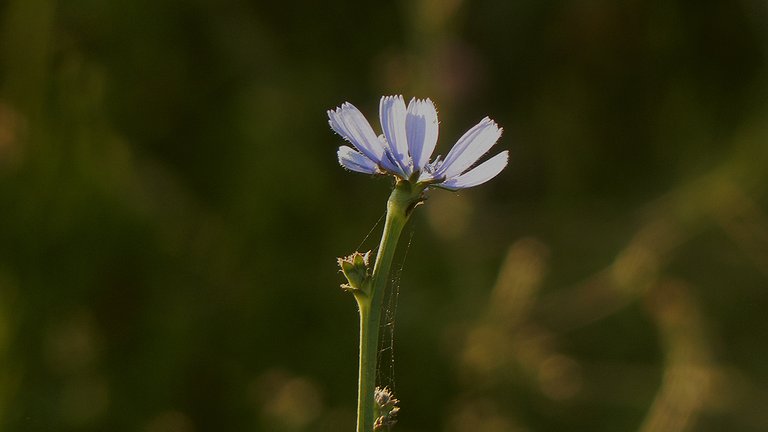
Here you can see a morning portrait of the Cichorium intybus flower.

This is the Araneus diadematus spider. The moth, presented in the following photograph ...
... belongs to the Pterophoridae family. I'm not sure what species exactly this is.
This crab spider, the Runcinia grammica from the Thomisidae family, was hard to notice on the background made of a multitude of tiny white flowers.

Here you can see a lovely shield bug from the Pentatomidae family. The name of the species is Graphosoma lineatum.
This is the Idaea ochrata, a moth from the Geometridae family.
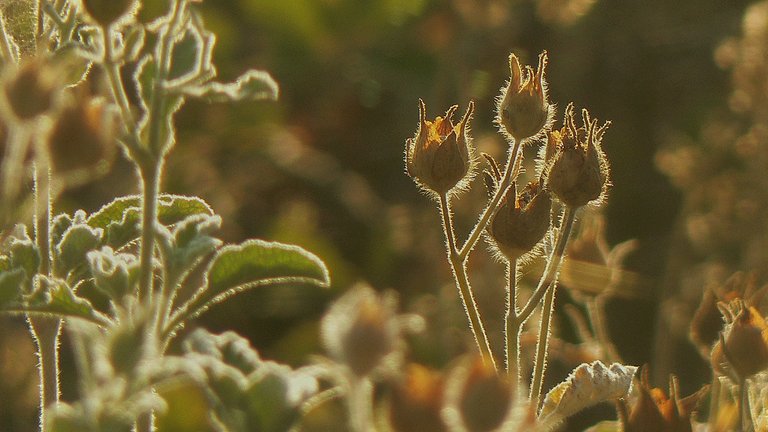
As noon was slowly approaching ...
... the light was changing. In this and the following few photographs ...

... you can follow that change ...

... through the details of dry grass.

The simple beauty of wild grasses ...

... can be pretty impressive ...

... when lit in a certain way by the strong midday sun.

This is the Gonepteryx rhamni ...
... a butterfly from the Pieridae family.

Here you can see another Neoscona adianta spider. This species was introduced earlier in the post.

This time the spider was hanging on its web.

Here you can see two dead ants on the ear of grass. The ants were probably caught by a spider. Can't tell you what kind of spider exactly it was.
On the ear of the grass shown in this photograph, you can see a tiny bug that came out of the old exoskeleton not so long ago.
The new skin is still soft and pinky. Can't tell you the name of the species in this case.
Could be the Eurygaster testudinaria or Eurygaster maura. Maybe.

Here you can see another insect in the brand new, still soft exoskeleton.

In this photograph, the old skin is blurred in the background.

When it comes to the name of the species ...

... this is the Oecanthus pellucens ...
... commonly known as the Italian tree cricket. If you compare these two shots with the previous four you'll notice that the wings of the cricket are now longer and almost completely "unpacked." At this point, I left the cricket resting on the green foliage of some plant that I wasn't able to identify ...
... and turned my focus toward the spider that was guarding a small silky nest not far from there.
This is the Oxyopes lineatus, a spider from the Oxyopidae family. Only females can be seen guarding the nest.

In the same area, I also photographed the mot shown in this and the following photograph.
The name of the species is Myelois circumvoluta. The family - Pyralidae.
Here you can see something that I wasn't able to identify. It looks like a product of some kind of larva.

This is the Adelphocoris lineolatus, a bug from the Miridae family.

when I returned to the Oecanthus pellucens ...

... the wings have taken the final shape.
The tree cricket was ready to continue its life as an adult.
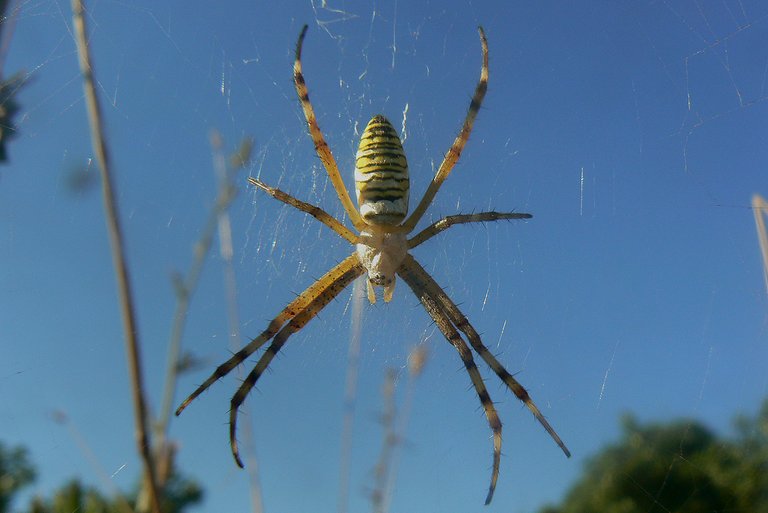
Here you can see the Argiope bruennichi spider.

In the early afternoon, I spent some time swimming, snorkeling, and sunbathing on the coastal rocks. In this and the following three photographs ...

... you can see the details, the patterns & structures ...

... of those limestone rocks.

Here you can see the most interesting rock formations I photographed a meter or two from the intertidal zone.

These small mussels were photographed closer to the sea, in the area that gets submerged when the tide is high.

Here you can see some algae in the shallow tidal pool.
This cicada was photographed in the meadow about fifty or sixty meters from there.
Can't tell you the name of this relatively small species of cicada.
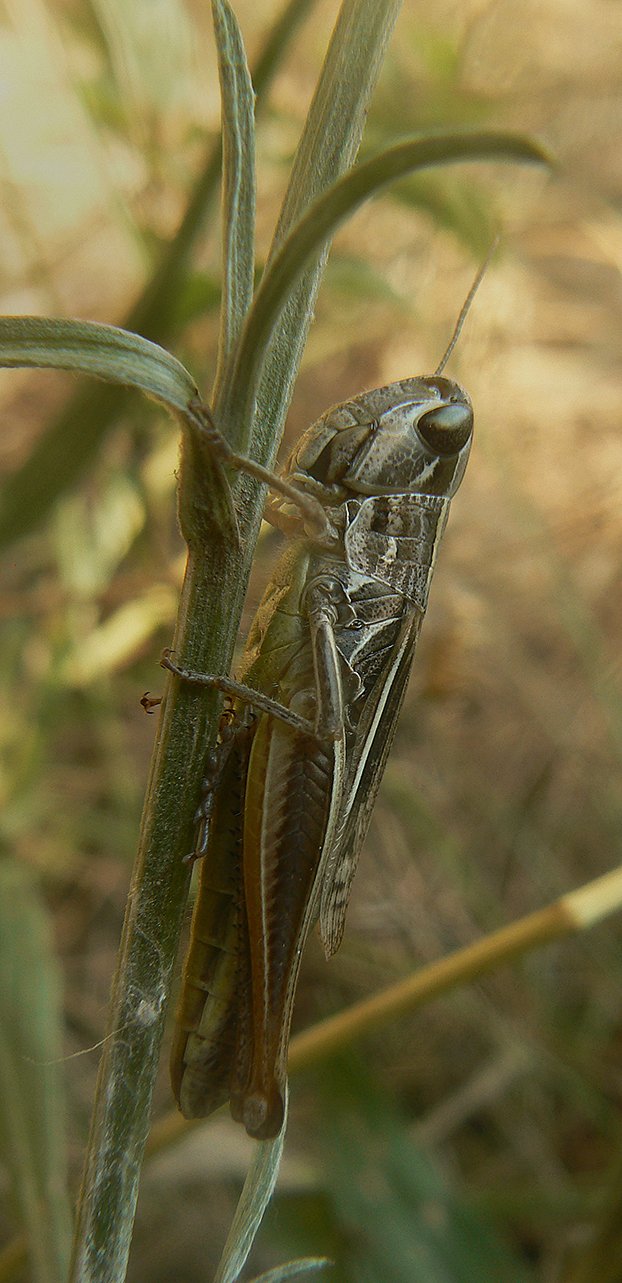
Not far from there, I encountered the Euchorthippus declivus grasshoppers.
Fairly big stones were loosely scattered around the coastal meadow and under one of those stones, I found a group of small land snails from the Chondrinidae family. The name of the species is Granaria frumentum.
In this triptych, I zoomed in on some distant signal tower near the shore and two seagulls that were resting there.
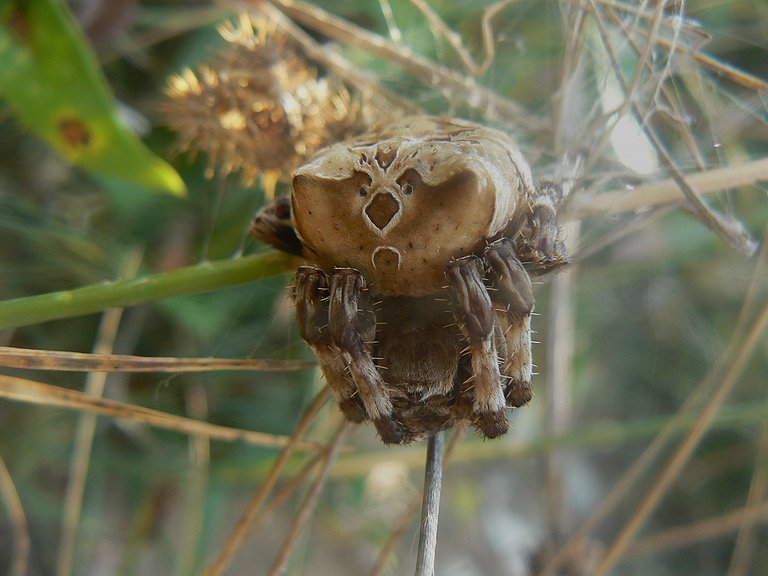
This is the Araneus grossus, an orb-weaving spider from the Araneidae family. Araneus grossus is a big spider that weaves large webs. The small spider presented in the following photograph ...

... was photographed on the web built by the Araneus grossus.

Argyrodes argyrodes, a species from the Theridiidae family ...
... resides in webs of bigger spiders ...

... and feed on the remains of the big spider's meals and tiny insects that the host isn't interested in.

Here you can see an interesting example of insect architecture. A miniature mobile home created with fragments of dry plants. The author is a moth larva. Can't tell you the name of the species.

You can see a slightly different type of moth larva construction in this shot.

Here you can see another Italian tree cricket.
The cricket shown in this and the previous photograph isn't an adult. This is an Oecanthus pellucens nymph.
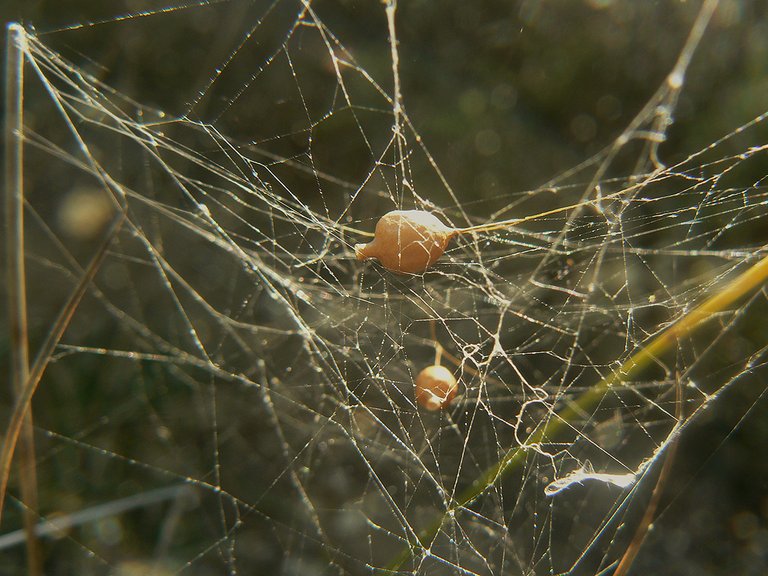
Here you can see some silky threads that were probably produced by caterpillars.

Here you can see the tops of the small pine trees that grow between the coastal rock very close to the sea. In the following photograph ...

... the pine twigs covered with needles are mixed with a detail of some dry herbaceous plant that grew at the base of the small, shrub-like tree.

About a hundred meters further on the trunk of one of the three cypresses on the edge of one of the many meadows in this area, I found this pearl made of resin.
This is the Chorthippus maritimus, a grasshopper from the Acrididae family.
At one point, a small nymph of some cricket that I wasn't able to identify ended up on the palm of my hand.
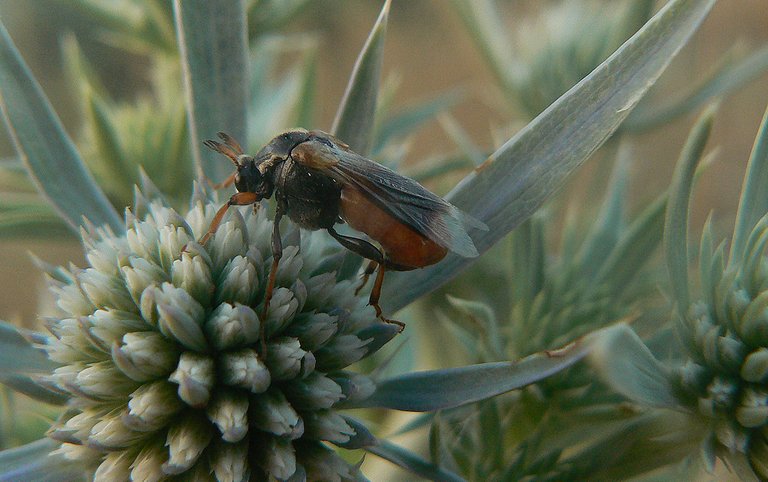
Here you can see another species that I wasn't able to identify. I taught is a sawfly at first. But now I'm inclined to think that It's a strange wedge-shaped beetle. The family is probably Ripiphoridae. That's all I can tell you here.
The moth shown in this and the following photograph ...
... belongs to the Geometridae family. Can't tell you the name of the species. A few confusingly similar-looking ones can be found in the area.

As the late afternoon was turning into the evening ...

... the light was slowly creating a different atmosphere ...

... that shared some similarities with the early morning ...

... presented at the beginning of the post.

At sunset, I was in the pine grove, more or less in the middle of the Natural Park ...
... and I took quite a few photographs there ...
... because the light at the end of the day looked fantastic.
Here you can see a detail of the contorted cypress tree on the edge of the grove.
This tree cricket was photographed nearby.

The Podarcis siculus lizard shown in this shot was resting on one of the rocks around the old cypress. In the following photograph ...

... the focus is on the pines again.
Sunsets offer great opportunities for photography ...

... but they don't last long ...

... so I was shooting frenetically ...
... to get the maximum out of the situation ...

... before the magic disappears.

Here you can see a scorpion hidden under the bark of a pine tree. In the following photograph ...
... you can take a look at the silhouette of a friend that was there with me.
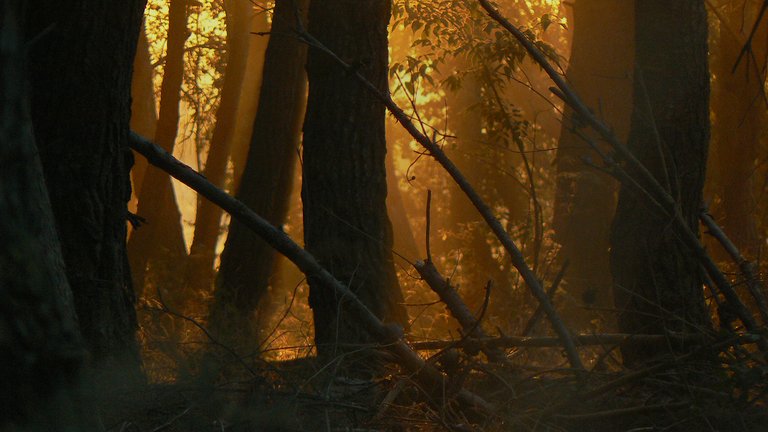
And that's it.
Soon I was driving back home.


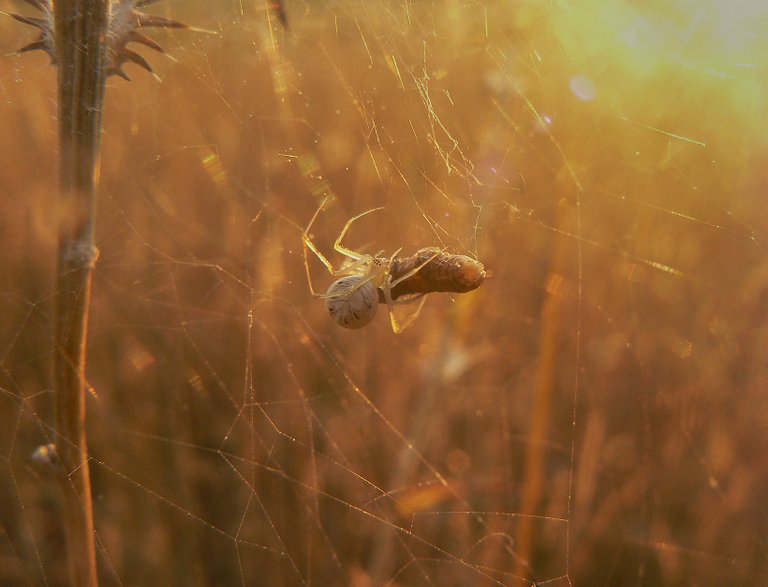


















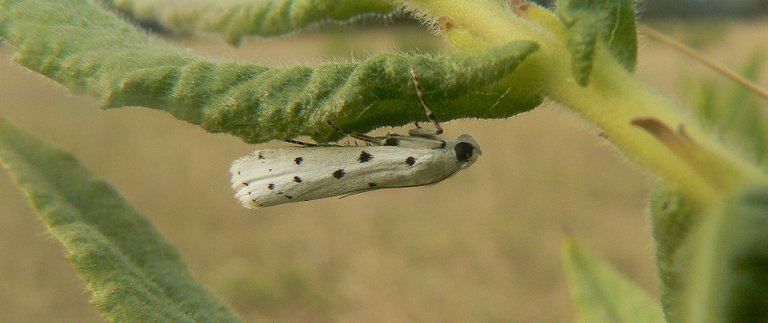










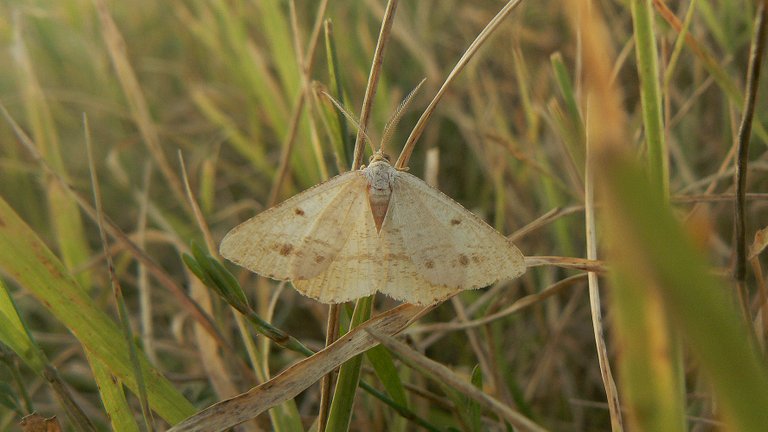









Yay! 🤗
Your content has been boosted with Ecency Points, by @borjan.
Use Ecency daily to boost your growth on platform!
Support Ecency
Vote for new Proposal
Delegate HP and earn more
I really appreciate your hard work you done with photography. You have a great attempt. One of the most wonderful characteristic of insects is that, their color matches to their habitat.
Once again hats off for your photography. Very well done.
the picture is very good, it really inspires me
Wow - great pics as usual. I love the shield Bug - never seen one of those before. Also loved the sunset pics !!
!LUV
!ALIVE
!PIZZA
@borjan, @hoosie(2/5) sent LUV. | connect | community | HiveWiki | NFT | <>< daily
! help(no space) to get help on Hive. Info@borjan! You Are Alive so I just staked 0.1 $ALIVE to your account on behalf of @hoosie. (2/10)
The tip has been paid for by the We Are Alive Tribe through the earnings on @alive.chat, feel free to swing by our daily chat any time you want, plus you can win Hive Power and Alive Power delegations and Ecency Points in our chat every day.

$PIZZA slices delivered:
jlinaresp tipped borjan
hoosie tipped borjan
@stem-shturm(5/5) tipped @borjan
There are so many amazing shots in this photo post, sunsets, butterflies, forests and that superb Cichorium intybus flower (Such a lovely colour). !LOLZ 👌
lolztoken.com
Because they can get down.
Credit: reddit
@borjan, I sent you an $LOLZ on behalf of fun.farms
(2/10)
Delegate Hive Tokens to Farm $LOLZ and earn 110% Rewards. Learn more.
Always a pleasure see your bugs shots!!!! Great!
!discovery shots
!VSC
!PIZZA
!BBH
@jlinaresp has sent VSC to @borjan
This post was rewarded with 0.1 VSC to support your work.
Join our photography communityVisual Shots
Check here to view or trade VSC Tokens
Be part of our Curation Trail
@jlinaresp ha enviado VSC a @borjan
Éste post fue recompensado con 0.1 VSC para apoyar tu trabajo.
Únete a nuestra comunidad de fotografía Visual Shots
Consulte aquí para ver o intercambiar VSC Tokens
Se parte de nuestro Trail de Curación
@borjan! Your Content Is Awesome so I just sent 1 $BBH (Bitcoin Backed Hive) to your account on behalf of @jlinaresp. (4/5)
This post was shared and voted inside the discord by the curators team of Discovery-it in collaboration with Visual Shots community.
Discovery-it is also a Witness, vote for us here
Delegate to us for passive income. Check our 80% fee-back Program
Awesome captures @borjan 😎 I like the warm colours on your photos…
So many creatures you found. The little one… the big just out of its skin and still pink is so cute.
The gif with the trees is pretty cool 😊
Thanks for sharing your captures with us. I enjoyed them.
Have a great evening 👋🏻
Incredible photographic repertoire, you can see a great variety of arthropods and different details of them. Some of the insects that you present in the photos I had not seen before, maybe because they do not have presence in my country, so I was like a little kid watching each photo hahaha.
On the other hand, the caterpillars that elaborate those excellent architectural shelters are from the Psychidae family, one of my next publications will be about this type of lepidoptera. Thank you very much for sharing your photos @borjan, best regards.
Looks like you had an amazing day out all the photos are fabulous
Thanks for joining the Wednesday Walk :)
Always glad to see your your hard work and struggle. After reading your posts, I also know a lot about insect's that I didn't know before. You have captured all these pictures very wonderfully.
I like the pictures and the storytelling. I can feel summer from the pictures too.
I love your photos my friend
Acá en mi país hay muchas lagartijas parecidas a la de tu fotografía.
El abejorro parece estar disfrutando sus flores.
El saltamontes de las últimas fotos luce genial, bonito trabajo el tuyo te felicito.
Your pictures is always great and amazing
https://twitter.com/lee19389/status/1681963946511572996
#hive #posh
Excellent photos excellent photographer
In our area, you need to spend six months to collect such a collection of insects in photographs :)
!PIZZA
That Graphosoma lineatum is an eye catcher! Love the sunset ones!
The displays of insects that I have shown are of extraordinary beauty. I love to see pictures of beautiful insects like these.